Surprise sale of High Barnet’s celebrated former schoolhouse raises doubts about its future use for community events
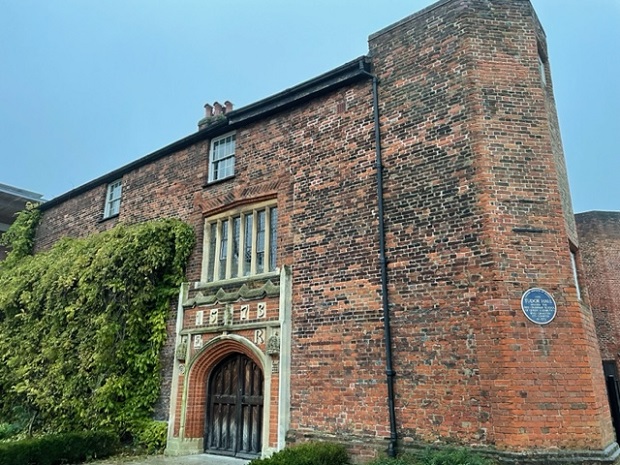
Barnet’s iconic and historic Tudor Hall — originally the schoolhouse for the free grammar school granted a charter by Queen Elizabeth I in 1573 — is up for sale and is being advertised by the agents Colliers as an “exceptional investment opportunity”.
It stands in a prominent position across the road from the parish church of St John the Baptist and fills one side of the courtyard in front of the campus at Barnet and Southgate College.
In recent years the hall has been part of what the college calls its “learning environment” and was occasionally hired out for conferences, exhibitions, and other events.
Colliers say the hall, which is a grade II listed building with Historic England, is now surplus to college’s requirements and is to be sold on a leasehold basis with vacant possession.
According to the Land Registry, the hall was valued at over £1 million in 2006. The college acquired the freehold from the former Barnet College for Further Education to which ownership was transferred by Barnet Council in 1987.
At the official opening of the £50 million Wood Street campus in March 2011, the Duke of Gloucester unveiled a commemorative blue back on the side of the Tudor Hall.
The college principal, Marilyn Hawkins, hailed the historic importance of the link to Queen Elizabeth I. “We’re really proud of the campus, and the fact that it boasts state-of-the-art facilities on the site of historic Tudor Hall, the oldest education building in Barnet.”
News of the sale has surprised High Barnet councillors and local organisations who say they hope that a new owner of the building will ensure it will still be available for community use.
Colliers are advertising the hall as a “banqueting hall and conference space”. Its sale will offer an opportunity for an investor to undertake structural repairs to refurbish and upgrade the interior areas which include a first-floor balcony and second-floor offices.
The sale is via informal tender with a bid date to be announced in due course if not already sold.
Similar iconic and historic buildings such as redundant churches, schools, halls and banks are often converted for other uses such as restaurants, public houses, gymnasiums, or offices, although any change of use of the Tudor Hall would have to take account of its status as a listed building.
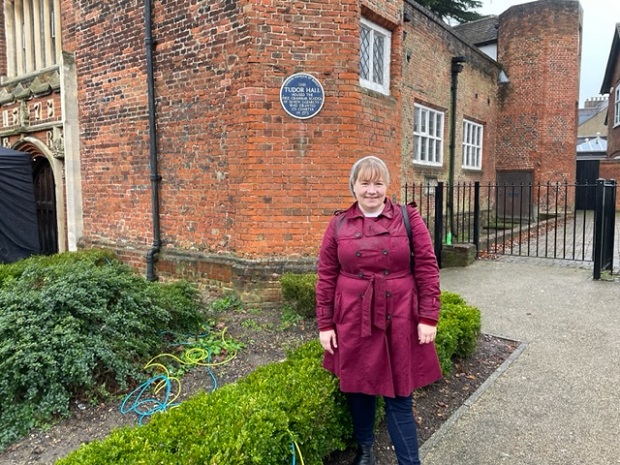
High Barnet councillor Emma Whysall (see above) said she believed the hall should be maintained as a community asset and kept open for public use.
“Ideally the hall should be deemed to be a community asset for the use of residents and the public.
“If Barnet Council had the money, I am sure the council could take it on, but sadly that is not the case.”

Theresa Villiers, MP for Chipping Barnet – (seen here from left to right with Robin Bishop and Frances Wilson, chair of Barnet society) – said she too had been caught by surprise by news of the sale.
“Anyone taking over the Tudor Hall will be limited in what they can do because of its listed status, and I do hope there will still be opportunities for it to be used by the community.”
Robin Bishop, who leads on planning and environmental, said he was sure the Barnet Society would do all it could to press the case for the hall’s continued use by the community.
“An ideal occupant would be Barnet Museum, but it would need a long lease and probably far more money than it could raise.
“It is hard to think of a commercial, or even charitable owner of the building, who would welcome public access unless it generated income, perhaps as an eating establishment or gym.”
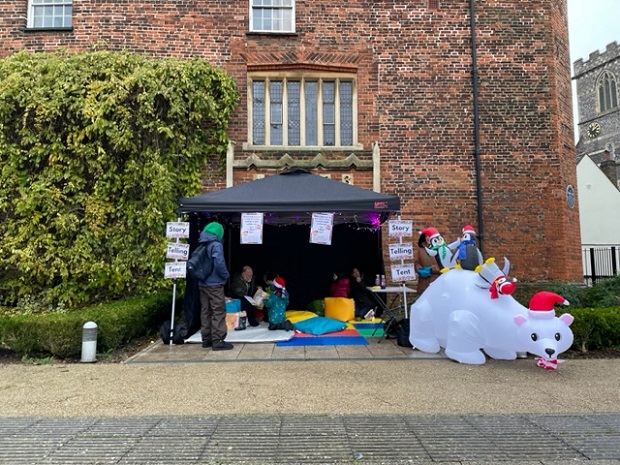
In previous years the interior of the hall has been incorporated into the space used by Barnet’s annual Christmas fayre for stalls and attractions – and was a regular home for Father Christmas and Santa’s grotto.
At this year’s event the hall was already vacant, locked-up and on the market — but its celebrated entrance, with the date ER 1573 and the Royal insignia, was put to good use.
It was Barnet’s success in Tudor times as a bustling market town on the outskirts of London that caught the attention of Queen Elizabeth 1 during the early years of her reign.
In 1573 she issued a charter establishing in Barnet a “free grammar school of Queen Elizabeth for the education, bringing up and instruction of boys and youth”, one the many she founded during her years on the throne.
Donations from church collections in the City of London helped to finance the construction of the original schoolhouse in around 1577, initially for up to 90 boys, and a boarding facility in the roof.
Boys at the school would have ranged in age from six to 19, of whom 30 or so would have been day boys and 15 to 20 boarders who lodged in the roof space.
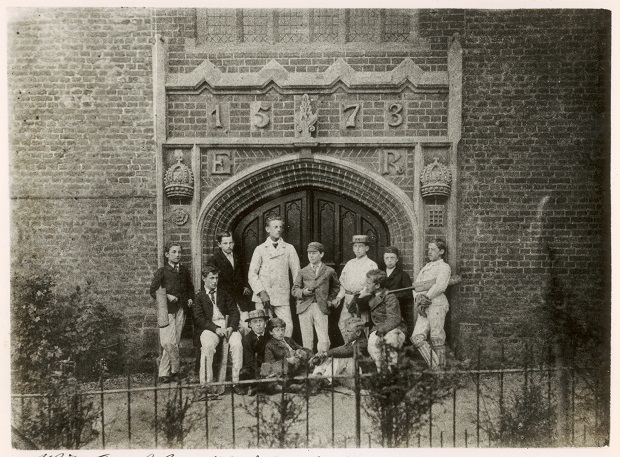
This picture of the school cricket team was taken in 1880 (and is reproduced courtesy of Queen Elizabeth’s School collection).
By 1919 the school had a roll of 240 pupils and the original schoolhouse, and some additional buildings were deemed to be inadequate. The following year the Board of Education recommended the construction of a new school on a new site.
In 1927 Hertfordshire County Council purchased a site off Queens Road and authorised the construction of a new school for 325 boys, at a cost of £5,000.
The new school building was opened in 1932 and forms part of what is now a much-enlarged Queen Elizabeth’s School (still known by local residents and parents as QE Boys).
Because of a concern at the time about the importance of protecting the original schoolhouse as an historical building, the governors sold it to the trustees of the Jesus Hospital Charity in 1928 for £1,750 on condition that it was preserved as an ancient monument.
The original schoolhouse was extended and altered in the 19th century and modified in the 20th and 21st centuries.
1 thought on “Surprise sale of High Barnet’s celebrated former schoolhouse raises doubts about its future use for community events”
Comments are closed.

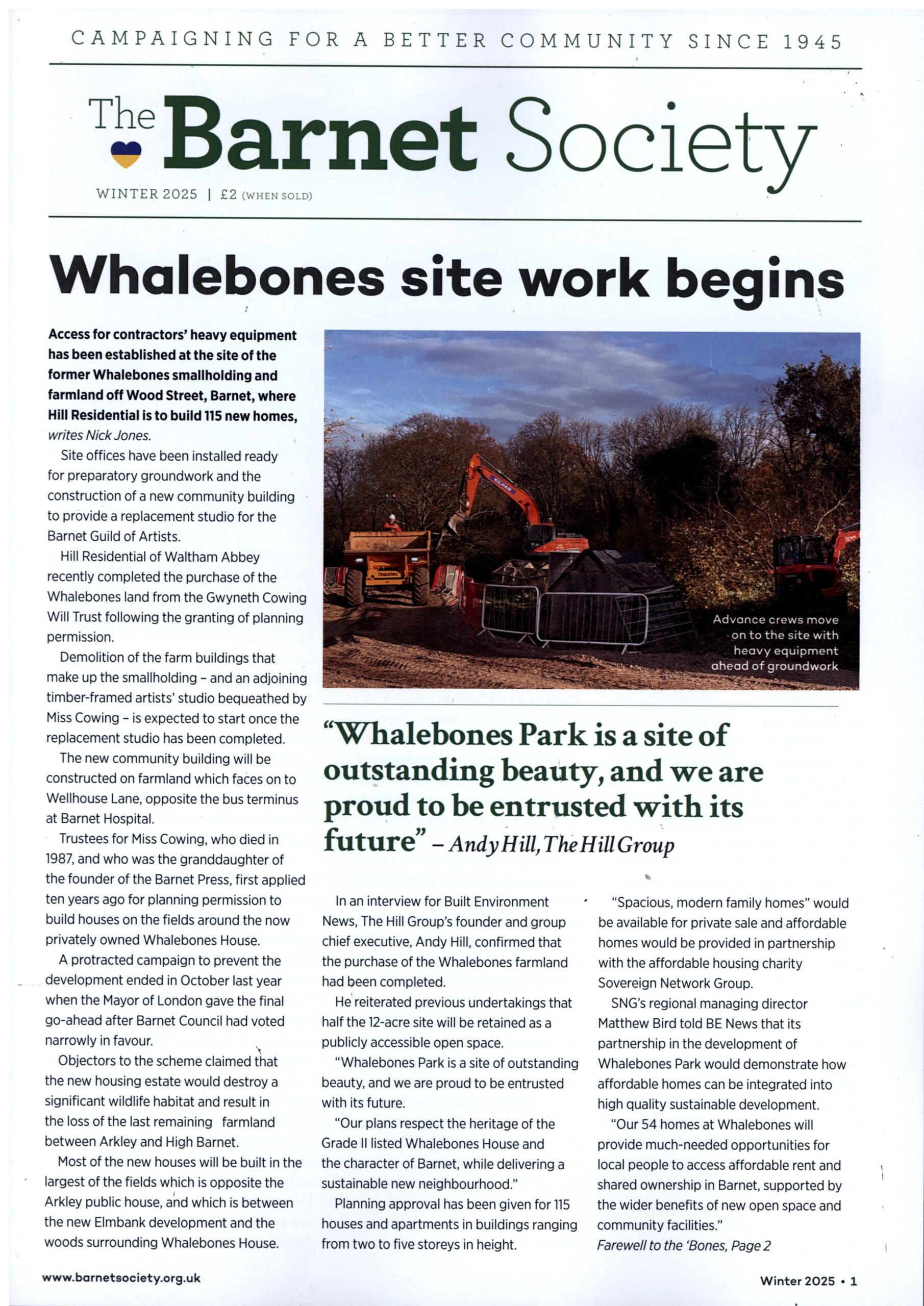
from the development in 2007…
“The use and future maintenance of Tudor Hall need to be guaranteed as part of the proposal. The prime use will be educational with some occasional community use.”
https://www.barnet.gov.uk/sites/default/files/assets/citizenportal/documents/planningconservationandbuildingcontrol/barnetcollegedevelopmentbriefadoptedjan2007.pdf